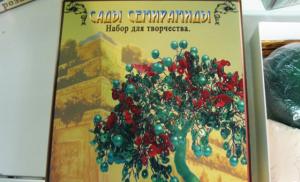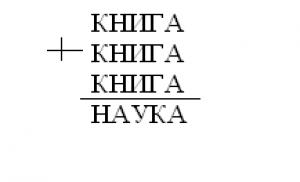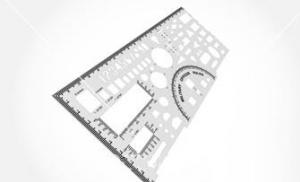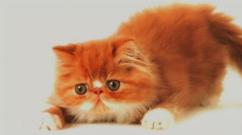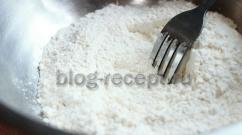What do they call what they draw on their hands. Mehndi is the art of painting the body with henna patterns.
Mehendi (mehandi), as well as mehndi, mehndi or mindi, is the art of painting the body with henna patterns, the history of which goes back many centuries. Mehndi, unlike a tattoo, is a temporary decoration of the body, but lasts much longer (up to three weeks) than paint or other methods of drawing on the body. Most common in Arab countries, India, North Africa and Indonesia.
AT oriental medicine it is used as a general purpose medical device. Henna powder is imported mainly from India and Egypt. High-quality fresh powder should have a bright green color. Hena is also used for hair coloring. Pure chicken color Orange color into brown red, the result of dyeing or dyeing always depends on your own pigment, so it is rare for women to create henna in the same color shade. Other shades of chicken offered in stores are made up of herbal supplements.
In the case of very dark and black shades, it is important to read the composition, which should always be mentioned, since this color is often achieved by the addition of toxic heavy metals. Each henna artist owns the correct and guaranteed color composition recipe. Sometimes her composition is strictly strained and transmitted only within the family. With different variations, this is henna powder, hot water, lemon.
The exact place of origin of the mehendi is unknown, as the art of henna painting has traveled throughout the centuries. different countries and continents, taking various forms according to tradition and culture different peoples. Some believe that mehendi originated in India, others argue that mehendi came to India only in the 12th century.
The skin is dyed either traditionally using lumber, a cotton swab, or a syringe. Because henna is a natural dye, it is highly dependent on temperature and duration. The best chicken catches places with more shabby skin, that is, palms and legs. The snake image lasts 7-14 days on your skin, depending on how much space you wash, you can extend the longevity by brushing with oil.
Since the origin of henna is mainly in Muslim countries, they are mainly decorated with ornaments and floral motifs. In India, henna has a very complex and extensive symbolism. At present, however, main beauty and interest in design, and especially the feeling of its owner.

However, the version that the art of henna painting originates in Ancient Egypt. There, noble ladies decorated their bodies and nails with a pattern. In the East and in Central Asia men used henna for the same purpose. They have reached great art in its application. Henna was used to dye hair, nails, and skin. The images were quite complex, mostly vegetative or abstract.
Brown henna lasts on the skin for 7-10 days and is also suitable for children or pregnant women
Let dry as long as possible and then de-oil - preferably with a handkerchief using oil. When henna is freshly dyed, it has dark color and characteristic. The longer you let your skin dry, the better. Photo. Healing on the skin is a kind of ritual act of protection, reconciliation, feedback with your body. By painting, you will rediscover your beauty, expressing your inner feeling, tenderness, sensuality, femininity on the surface. Every part of our body is beautiful - let's remember this together, celebrate, return to pride.

Initially, only people from rich and noble families could afford the use of henna paste with aromatic oils. However, very little time passed, and even the poorest sections of society followed their example. The reason for this was the general availability of henna powder. Egyptian women covered part of the face and chin with tattoos, men “worn” hoopoe images on their temples.
Sample Lesson for Kids - Free!
After all, the painted hand is more conscious, its movements are more graceful, the tattoo reminds us that at all times everything we do is magic and beauty. You have smart artist at home and would like to develop your talent? Are you thinking about regular visits to the atelier, but would you like to visit us first?
It's tempting to try to draw, you're thinking of visiting the studio regularly, but would you like to visit us first? Do you have a beautiful vintage photo of your home and would like it to be good? Intuitive or automatic drawing in art studio intended for anyone interested in learning beautiful world colors, shapes and symbols - and makes them more familiar with themselves.

In India and Central Asia, only natural henna powder was used. And the inhabitants North Africa often mixed with charcoal or soot. From this, the tattoo became much darker, and sometimes completely black.

In just one day, each participant draws his own own picture with oil paint on canvas. Prove that you can do it too. We meet our heroine in one of the cafes in Katowice. Despite the fact that it has a lot of noise and the music is very loud, we managed to make one of the most interesting conversations. But in our conversations, he turned out to be a real Renaissance man, because body decoration is only one of her few extraordinary passions and interests. When we think of the first henna, what comes to mind are mini kiosks in mountain and coastal resorts where you can paint on or in the body.
For five thousand years, women in India and the Middle East have used henna as a form of decoration. Indian women they decorated their hands and feet with special patterns, the art of applying which eventually turned into one of the most recognizable signs of India.

The greatest masters in this art were the women of Rajasthan, from the fertile valleys located southwest of Delhi. They skillfully painted their palms and fingers, as well as their feet and toes. The art of mehendi takes important place in Indian culture. Customs associated with the use of henna date back to the 4th century. This art has many names - mehendi, mehndi, camphor, cofer.
However, Asia soon explains to us that such henna matrices do not have much in common. What is rarely painted in such places is real henna. Usually these are different chemical oils, which it is better not to even mention. When you paint yourself or don't give god to your children, you run the risk of allergic or even very serious chemical skin burns. Therefore, it is better to avoid such places and, of course, when you are allergic.
This is not henna, which is a plant product, but a paste that can be applied to the skin. Since our heroine is the most allergic for her, her products are one hundred percent organic. He brings everything from trusted suppliers and prepares the pasta by hand.

Since ancient times, the bride has been painted with bio-tattoo on the eve of the wedding. Experienced relatives with the help of thin wooden or metal sticks, manually deducing intricate patterns on her arms and legs, initiated her into the secrets of marriage. By the way, on the palms and feet, the paint lasts the longest, because in these places the skin is drier and thinner.
The products were safe to use even with pure distilled water, so that the final product did not receive various undesirable substances. Jagua, extract from a South American plant, buys only from trusted suppliers. Yagua is a dye used by Indian tribes. South America. It is usually used by male warriors, but in special occasions women also draw it. Although the jagua itself has Brown color, skin dark blue and black. Combined with the character of our heroine, the effect is amazing - many people mistake the painted pattern on Toshi's arms with a real tattoo.

The traditional drawing is so complex and intricate that it took several days to work on it. But the more elegant the drawing turned out, the more the bride was privy to the secrets of erotica. And the duration of the holiday for the newlywed depended on the stability of the tattoo. According to Indian tradition, as long as the wedding tattoo was kept on the body of the newlywed, the girl was freed from all everyday troubles and duties.
Asia started painting henna 9 years ago in rather unusual circumstances. She was very passionate about Bollywood at the time, and in one of the themed events, she was asked to draw henna samples on the skin of the gathering attendees. He admits that these first designs were not the highest flying and the henna itself was not of particularly good quality.
Instead of brilliant paintings, there were rather light orange spots. But it was enough to swallow the wand, and it has been her biggest passion ever since. Whenever we listen fascinating story about the ancient tradition of henna painting, which may mean hyung patterns and painting ritual. At this time, Sid covers unusual pattern Toshi: This is a combination of deer and dreamer with traditional Indian design elements. As one of the few in addition to performing traditional designs from Asia or Africa, Asia beautifully illustrates pictures of the natural world and widely popular culture.

In India, openwork ethnic patterns are especially popular, as well as images of a lotus flower, a peacock, an elephant with a raised trunk (this is a symbol of good luck). In Arab countries, preference is given to floral ornaments (they decorate the palms and feet). The inhabitants of the North African states are held in high esteem by geometric patterns: among the Berbers - in the form of short straight lines, dots, circles; among Moroccans - in the form of rhombuses, triangles, curved lines, etc.
This amazing mixture makes her henna painting completely new and unusual. Some say that even the Neolithic era, but it changes all the time, and that the following artists add their new ideas, patterns and inspirations to it. One of the most recent traditions that began in Australia a dozen years ago is the so-called henna crown. This is a picture of models that look like crowns on the heads of people who have lost their hair due to chemotherapy or other diseases that cause alopecia.
This has a great therapeutic effect, especially for women for whom hair is the main attribute of their personality. Over the course of thousands of years, the meaning of henna paintings has changed across regions, cultures, and times. As a rule, such body decoration had one thing in common: it was associated with positive and joyful moments of life. This is why matching the pattern itself can have a very positive impact on the well-being of the person who chooses to wear such a design.

Mehndi is not only an ornament, but also a symbol, a ritual rite, and a talisman. Everyday drawings are simple and uncomplicated, but for celebrations and holidays, women cover their bodies with bizarre flowers and petals and marvelous arabesques. Traditionally, the bride's body is covered with intricate henna designs, and the remaining powder is buried in the ground to protect the marriage and avoid her husband's infidelity. In Morocco, pregnant women covered their ankles with patterns to protect the child from the evil eye.
As we mentioned earlier, Sid - real man the Renaissance. In addition to being a whip, he is involved in many initiatives, including volunteer workshops. She even visited a nursing home where she talked about what she was doing. He is also a big fan of fantasy and science fiction. Consequently, he participates in conventions and meetings of admirers of this field of literature and cinema.
No wonder listening to what Asia does and where she travels and how many things she does, we come to the conclusion that her day should be a few hours longer than her day. ordinary person. Suffice it to say that in order to dye henna, you need to agree at least a month in advance, because our heroine is rarely not scheduled for the next weekend.

In Hindi, the word "henna" sounds like "mehndi". The henna used for mehandi is obtained from the leaves of the cinchona tree (in Latin it is called Lawsonia inermis), which grows in hot and dry climates. Henna is common in many countries of North Africa and the Middle East. Mainly grown in Iran, Pakistan, India, Sudan, Nepal, Egypt, southern China and Sri Lanka. The arrow-shaped cinchona leaves are harvested, dried, and then ground into a fine powder.
Asia also paints, but not only on canvas or paper. And besides, learn Korean! Her great passion is the Korean series, where, presumably, nothing will be seen in Western productions. According to her, she has already seen more than three hundred Korean series, but it no longer takes into account how many. All this translates into her work in all areas. Inspirations intertwine and form a unique blend. His interests flow into one sentence that says it all.
We've been talking to Asia for over an hour and a half. It was a truly exciting meeting. First of all, we got great amount knowledge, but we also learned how passion and interest can create an amazing combination that leads to truly extraordinary things. Tosya left the meeting with another drawing on her hands and, of course, not the last one. After we waited in line for the next person who decided to make a talent, Sid was transferred to her skin.

It is impossible to say exactly where this plant comes from, who first discovered it miraculous properties, began to use it, cultivate it and from where it spread throughout the world. It seems that throughout the path of human development, it has always been next to him. Dried henna leaves have been found in ancient Egyptian tombs. In the very first medical treatises there is a mention of the use of henna in medicinal purposes. There is a reference in the Bible to the use of henna as hedges. The Prophet Muhammad used henna and the scent of its flowers was his favorite fragrance. Essential oils with a wonderful aroma of henna flowers have been used as perfumes since long before our era. And the use of henna as a dye for fabrics, skin, for dyeing hair, nails and for painting on the body is an integral part of the culture of the ancient peoples of India, the Middle East, North Africa and Australia.
Come to the site in Asia, because it's really worth it. All guilty of wrongdoing are defenseless, although someone had to come up with the idea of using this defenseless bush. The mummy is mostly in Egypt, and in India wide-eyed people usually limit themselves to painting their hair or skin. Initially, both were reserved exclusively for women, although it was not entirely clear, as it was in the Vedic period, when khnopathy was part of various rituals, and it is known that as a ritual it must be male, since virginity has external and visual principles principle, the vanity of a man enters the spiritual world.

The composition of henna has antiseptic properties. This is an absolutely safe dye, it stains only dead, keratinized layers of the skin. The more keratinization, the more saturated the color is, and the pattern lasts longer - palms and feet in this sense are the most suitable places. The color of henna is only brown. Also, two other dyes are common in mehendi - Indigo, giving blue color, and Harkus - black dye. Harkus is, in fact, ash - it is formed from the burning of the bark various trees. Doesn't last long on the skin.
Currently, henna is used in various forms and differently by both sexes, although women play a far leading role here. But, for example, in such Pakistan, men regularly smear their hair with henna to hide grayness or quite often in these areas of albinism.
As soon as henna hair dye was popular in our country, at times not so distant and characterized by the absence of more advanced products such as hair dye. Henna is cool, it smells like swamp rot and herbs, it gives interesting color effects, and its overlap is so complex that it can be considered a kind of ritual.

Traditional Indian Mehndi Patterns - Intricate Drawings fine lines, arches, leaves of plants, lotuses (flower-symbol of India), peacocks (bird-symbol of India), mango (fruit-symbol of India), lace sketches, auspicious and religious symbols. Often mandy patterns are based on more simple forms- paisley, circles, triangles, lines, combined with each other to create an intricate pattern, and cover all hands, sometimes the forearm. Geometric floral patterns are applied to the legs, thereby emphasizing the shape of the legs.

Mehendi means the power of love in marriage. The darker the mehndi, the stronger love. Red is the color of fertility, power. The figure uses floral ornaments, images of birds and animals, they symbolically connect a woman with nature, the concepts of birth, nutrition, growth, regeneration. According to legend, mehndi protects from evil spirits, misfortunes, illnesses and even death. Many arab women It is believed that mehndi brings happiness and protects against bad luck.

In Indian culture, henna painting on the body is considered a symbol of good luck for married women(suhagan). Indian women deeply believe that mehndi will bring them a lot of love and care from her husband. How beautifully her hands and feet are adorned, so much should she make every effort to delight her husband and fall in love with relatives from his side. In Rajasthan, grooms also adorn the body, the patterns of drawings are no less complex than the girls.

Henna drawings also have a purifying effect on a more subtle energy level, because it is known that all the main energy centers of the body - chakras - are reflected on our palms.

The chakras are located in the areas of the main nerve plexuses in the central nervous system person. They regulate the functioning of various organs of the body. The condition of our chakras is a direct result of our thoughts and actions. Each chakra, out of the seven main chakras, corresponds to a specific area in the palm of your hand. Getting on the projections of the chakras, cleansing henna affects the entire body as a whole, absorbs excess heat, and brings a person into balance.

Natural henna dye recipes:
- Dissolve 30-40 grams of pure henna powder in 500 ml hot water.
- Dissolve 30-40 grams of pure henna powder in 500 ml of hot water. After the water boils, add 2 teaspoons of ground coffee and black tea. Boil for an hour. Strain.
- Dissolve 30-40 grams of pure henna powder in 250 ml of hot water. After the water boils, add 250 ml of red wine.
- Dissolve 30-40 grams of pure henna powder in 500 ml of hot water. After the water boils, add 2 teaspoons of sugar and lemon juice.
- Dissolve 30-40 grams of pure henna powder in 500 ml of hot water. After the water boils, add 5 tablespoons of clover and steam over low heat for 20 minutes.
The color of the paint depends on the recipe.

Mehendi is popular now all over the world - and on various tricks, bachelorette parties, and even at simple parties. It has received the status of body art, the art of decorating the body, a kind of fashion accessory for young people.











In ancient Egypt and India, young beauties adorned their bodies with drawings and patterns that had a special meaning. Over time, the mysterious body painting won the hearts of not only oriental beauties, but also the ladies of the Western European continent. And all because henna painting is an alternative to tattoos. This drawing looks beautiful and original. And the healing properties of henna add a special appeal to this art form.
The history of mehendi
Henna painting is ancient tradition originated about 5000 years ago in India. The rituals for creating drawings on the body are called "mehendi" ("mehndi"). Intricate images carried a certain sacred meaning. Initially, mehendi was used only at ceremonial events, in particular wedding ceremonies. Henna drawings adorned the skin of the bride. geometric patterns applied to the arms, legs and forearms of future wives. The images carried a religious meaning and emphasized the beauty of oriental young ladies. A tattoo in the form of a triangle personified male activity, a square meant stability and honesty, a star symbolized divinity and hope. In India, mehendi was considered a symbol successful marriage for women. Oriental beauties still sincerely believe that the mysterious underwear painting will give them a lot of love and happiness in married life. In addition, mehendi protects a person from evil spirits, diseases and misfortunes.
Healing properties of henna
Mehendi has a beneficial effect on the entire body. Henna painting on a subtle energy level has a cleansing effect. In the Vedic teachings it is said that on the palms of a person there are chakras - the energy centers of the whole organism. They are located in the main nerve plexuses and regulate the work of various organs. human body. Once in the area of the chakras, henna has a cleansing effect. In addition, it absorbs excess fat and maintains balance in the body. Mehendi is a kind of Vedic customs that are designed to awaken the "inner Sun" in a person. Therefore, this art has an important symbolic function. 
How to prepare henna
The mixture for body painting is prepared from natural henna leaves, which are ground on special grindstones. Aromatic oils, lemon juice and sugar are added to the henna powder. The resulting consistency is applied to the drawing, which dries within half an hour. At first, the paste is black. After a few hours, the henna peels off and changes color: from light orange to dark brown. Henna painting lasts from 5 to 14 days, depending on the type of skin and the place of drawing.
Features of applying henna
2 dyes are common in mehendi: indigo - blue, and harkus - black. But the natural color of henna is only brown. The paste is applied to separate parts of the body with different brightness and intensity. On the neck, such a pattern looks less bright and is quickly washed off, but henna painting on the hands is long-term and takes saturated color. It is not recommended to constantly apply a tattoo on the same area of the body so that the skin can rest from external influences. Mehendi can be applied no more than twice a month on a specific area of the body. Otherwise, such a hobby can provoke skin diseases of varying severity. Before applying a henna tattoo, the skin should be degreased by washing it thoroughly with soap and water. If there is hair on the area of the body under the tattoo, then they must be removed. Intense sun exposure should be avoided the day before drawing. 
Mehendi at home
 You can make a henna tattoo without leaving your home. First you need to prepare the mixture. To do this, mix henna powder, lemon juice, aromatic oil and a little sugar. Henna painting at home is better to start 12 hours after the preparation of the paste. At this time, the resulting mixture is recommended to be wrapped in plastic bag for "ripening". It is better to apply henna with an applicator. You can also use cotton swabs, brushes and toothpicks.
You can make a henna tattoo without leaving your home. First you need to prepare the mixture. To do this, mix henna powder, lemon juice, aromatic oil and a little sugar. Henna painting at home is better to start 12 hours after the preparation of the paste. At this time, the resulting mixture is recommended to be wrapped in plastic bag for "ripening". It is better to apply henna with an applicator. You can also use cotton swabs, brushes and toothpicks.
Painting on the body with henna is done in a warm room. Thin and small patterns can be drawn with a toothpick. The paste is absorbed into the skin almost instantly. Therefore, in case of incorrect application of a stroke, it must be wiped off immediately. cotton swab. To get a light and yellowish tone of the tattoo, the paste must be smeared with a very thin layer of a wooden stick over a wide surface. It is better to start drawing with drawing the narrowest lines, and it is recommended to complete the work with rounded elements. Painted areas of the body should be covered with a cloth and kept warm for 3 to 6 hours. After that, the skin can be opened. The color of the tattoo will vary from pale to dark shades orange.
